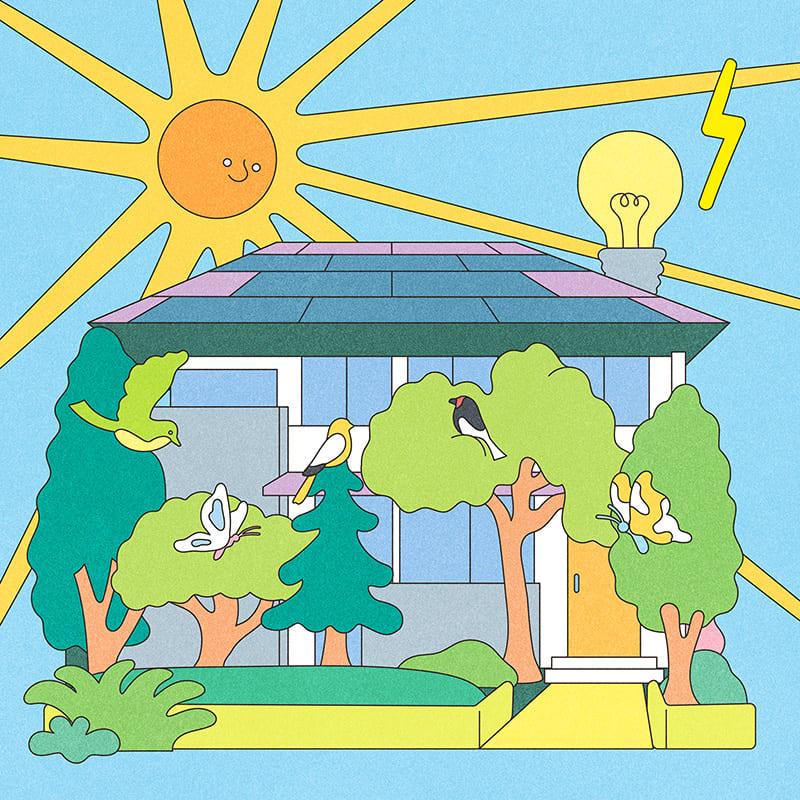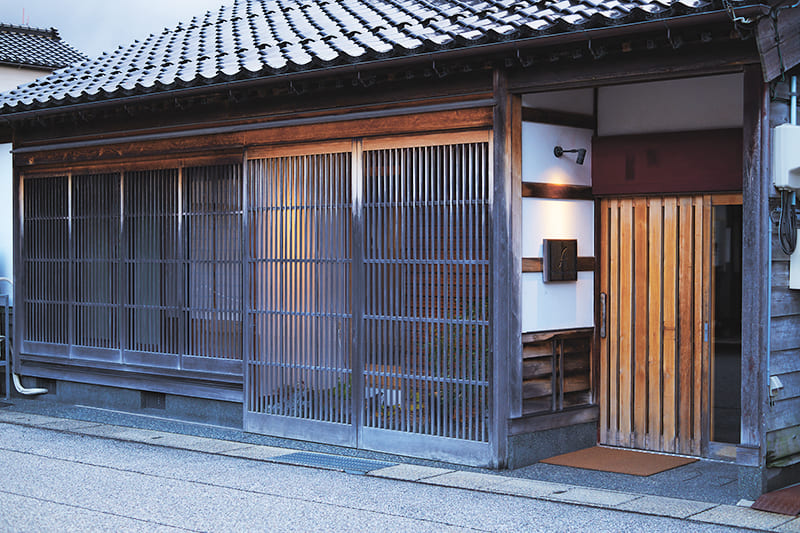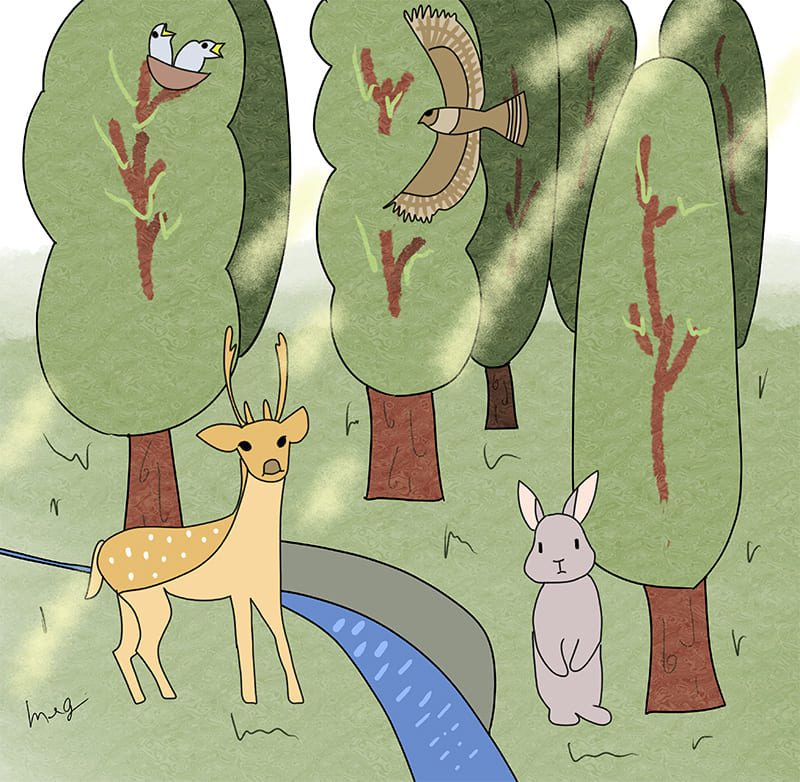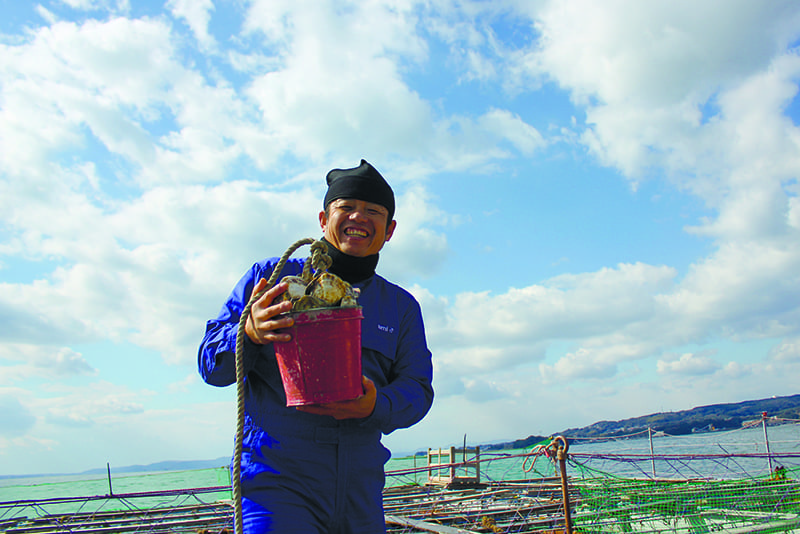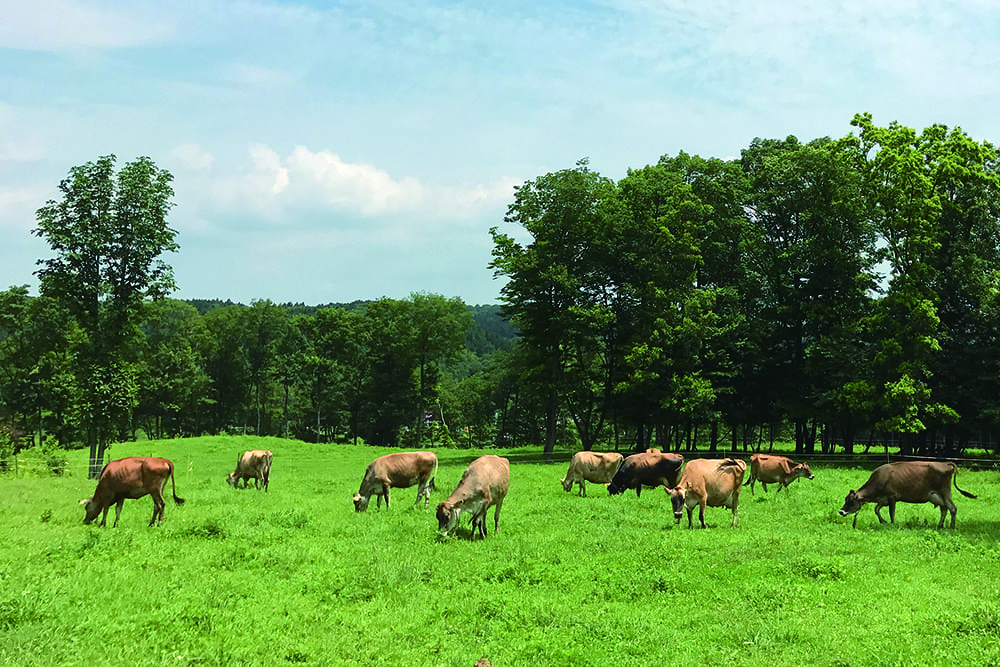July 29, 2022
Fishermen’s Forest links land and sea resources
TREE PLANNING
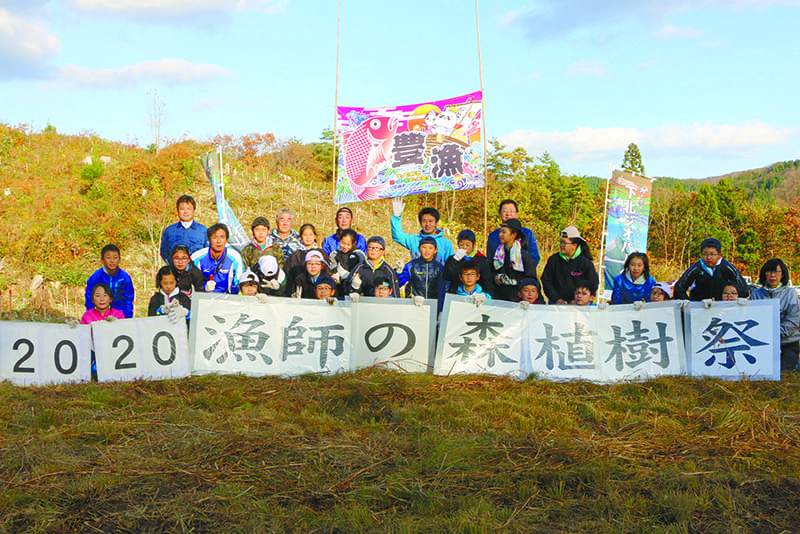
Minerals from lush mountain forests find their way into rivers and then flow into the sea. In recent years, a group of fishermen in the Aomori city of Mutsu have been trying to sustain this healthy cycle linking land and sea resources by planting trees in their neighboring mountains. They call their project Fishermen’s Forest.
Mutsu, in the northernmost part of Honshu, has been known for its sea cucumbers and abundant fisheries since the Edo Period (1603–1868). These days, scallop farming is also popular. It was about 20 years ago that a group of local fishermen began a program of tree-planting in the area. Central to that group was Shigeru Nihonyanagi, of the Mutsu City Wakinozawa Agricultural Promotion Corp.
“Scallops feed on phytoplankton, and the minerals supplied to the sea are the main determinant in how good they taste once harvested. Around 80% of the area of Mutsu is forested, and as the leaves fall to the ground and rot they are returned to the soil. Rainwater and snowmelt seep into the ground and then the water finds its way back into the sea via rivers. Rich in organic substances and minerals, this water is ultimately the source food for the scallops,” Nihonyanagi explained.
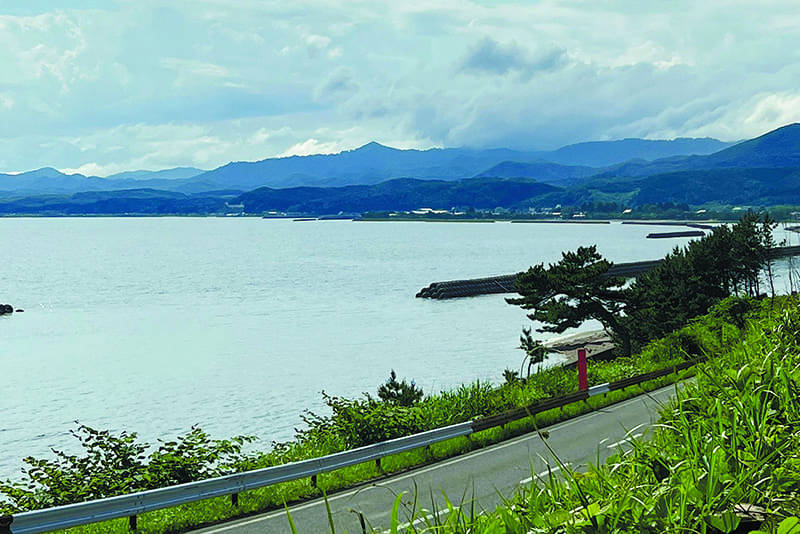
In order to produce nutrient-rich humus that provides minerals for scallops, broad-leaved forests are preferable to coniferous forests. However, during the period of Japan’s high economic growth from the late 1950s to the 1970s, a large number of sugi (cryptomeria) trees, which are easy to use as building material, were planted all over Japan. The coniferous sugi trees grow rapidly, but this makes it hard for other plants to thrive alongside them. Since that time, the seawater has lacked minerals and, with expanded scallop farming also contributing to the problem, scallops became smaller in size. The tree-planting work began in response to this problem.
“It takes a long time to create a forest. The tree-planting that started about 20 years ago was temporarily abandoned, but with seawater temperatures rising recently due to global warming, we are seeing a big impact on the scallops,” Nihonyanagi said. “So it became clear that long-term planning to ensure the supply of minerals from the upper reaches of the mountains was essential, and we restarted the tree-planting in 2018.”
In recent years, there has also been a movement to make compost using the small shellfish that stick to fishing nets when pulling up scallops from the sea, and then use that compost as fertilizer when planting the forests.
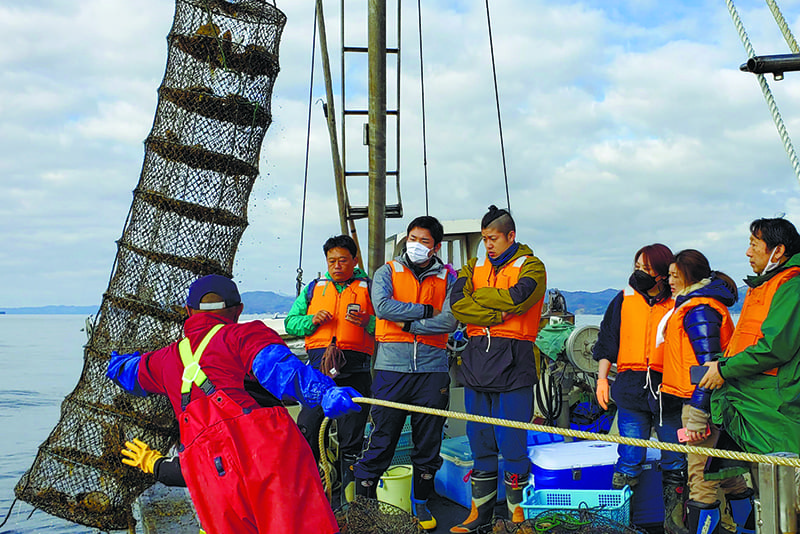
“Once something has been landed in the boats, we’re prohibited from returning it to the sea again. But it wasn’t easy to dispose of that residue, with the cost of incineration being significant,” Nihonyanagi said. “We succeeded in composting the residue by mixing it with livestock manure, and now even farmers are using it.”
In this way, a system for helping the circulation of resources between the mountains and the sea has been created. So how does Nihonyanagi, who has been involved in this work for many years, intend to pass it on to the next generation?
“The trees are all planted at one time every year, and the program is run by the local fishery cooperative and also forestry association, and local children get involved too. The chairman of the fishery cooperative was working on this for 20 years,” he said. “But now the head of the young fishermen’s group within the cooperative is participating too, and so the knowledge is being passed on to the next generation. We humans need to keep doing whatever we can to maintain these rich natural resources.”
漁師たちが自ら山に植樹する青森県むつ市「漁師の森」。
山の豊富な森林から生まれる栄養源は、川から海へと流れていく。そうした海と山の資源循環を持続させるべく、水産業に関わる漁師たちが自ら山に植樹をする「漁師の森」が、本州最北部、ホタテ養殖が盛んな青森県むつ市で続けられている。20年前から活動を続けてきた、むつ市脇野沢農業振興公社の二本柳茂氏に話を聞いた。
「森の木々から葉が落ちて腐葉土となり、降雨や雪解け水によって地中に染み出した天然の水が川から海へと流れていく。この有機物やミネラルを豊富に含んだ水が、ホタテを美味しくする飼料源となるんです」
一時は途絶えた植林活動だが、昨今の温暖化によって養殖ホタテにも影響が出始め、2018年から再スタート。
また近年は、海中のホタテを陸揚げするときネットに付着してしまう小さな貝などを堆肥化し、植樹林の肥料として再活用する動きもある。
「植樹活動の主催は地元の漁業協組合や森林組合、そして近所の子供たちが参加しています。世代を継承して、人間たちでできることを続けていきたいですね」
Return to Sustainable Japan Magazine Vol. 14 article list page

